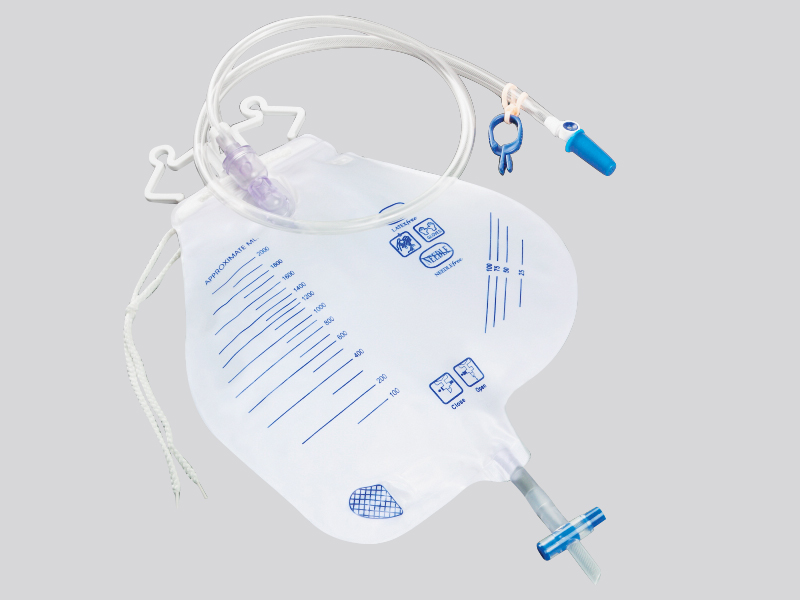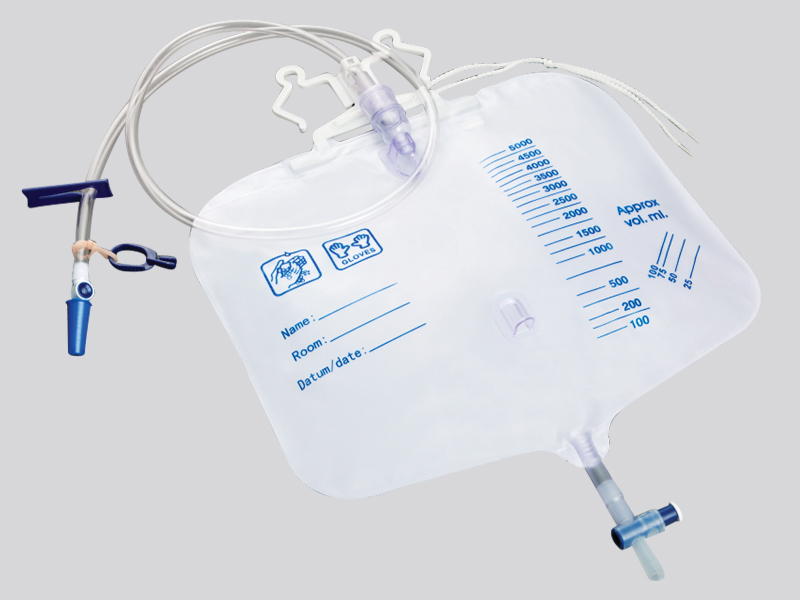The current position:Home > Information dynamic
> Industry Trends
Where is the non-woven fabric used for disposable drainage bags (leg bags)
source:www.cnboyi.net | Release time:2025年09月08日1、 Core application: Leg bag fixation system - achieving "stable fit+comfortable wearing"
The leg bag needs to be attached to the legs for a long time (such as the outer side of the thighs and calves), and the contradiction between "fixed and not falling off" and "wearing without rubbing the skin" needs to be solved through non-woven fabric components. This is the main application scenario of non-woven fabric:
1. Adjustable fixed straps/waistband substrate
Function: The "fixed straps" (usually 2-3 strips, used to wrap around the legs for fixation) or the matching "waistband" (auxiliary fixation to prevent slipping) of the leg bag, and its core substrate is often spunbond non-woven fabric (such as PP spunbond fabric).
Spunbond non-woven fabric has sufficient tensile strength (not easy to break when wrapped), softness (fits the curves of the legs without hurting the skin), and the slightly rough texture on the surface can increase friction with clothing/skin, avoiding the sliding of the straps; At the same time, non-woven fabric is lightweight and can be worn for a long time without significant weight-bearing sensation, solving the problem of traditional plastic tape being "hard and easy to grip".
Usage details: Some straps will be compounded with a small amount of elastic fibers (such as spandex) on the surface of non-woven fabric to further enhance stretching adaptability and adapt to different leg circumference groups; The end of the strap is usually paired with Velcro (a hook/loop surface of non-woven fabric substrate) to achieve "one stick, fixed, and repeatedly adjusted".
2. Leg fitting pad (in contact with the skin layer)
Function: A layer of hydrophilic non-woven fabric (such as ES hot air non-woven fabric) will be attached to the edges of the leg bag body (usually PE/PVC film bag body) that come into direct contact with the leg skin (such as the sides of the bag body and the inside of the strap).
Its core function is to: ① absorb slight sweat on the surface of the skin (especially in summer or when worn for a long time), to avoid sweat causing adhesion between the bag film and the skin, and to prevent stuffiness; ② The hardness of the edge of the buffer bag prevents the film from directly rubbing against the skin, causing redness, swelling, and pressure marks (especially for sensitive skin populations such as the elderly and postoperative patients); ③ Enhance the skin friendly feeling of wearing and reduce the discomfort of long-term wearing.
2、 Important applications: Protection and hygiene assistance - isolate pollution+enhance safety
Leg bags belong to medical consumables and should avoid "bag body contamination" and "secondary contact contamination during use". Non woven fabrics provide protection through physical barrier properties and disposable characteristics
1. Independently packaged inner/outer protective layer
Function: The independent packaging of a single leg bag (sealed packaging before opening), with the inner layer (the layer directly in contact with the leg bag) mostly made of sterile non-woven fabric (such as medical grade spunbond meltblown spunbond composite non-woven fabric, i.e. SMS non-woven fabric), and the outer layer made of waterproof film (to prevent external moisture from penetrating).
The function of sterile non-woven fabric is to: ① keep the leg bag in a sterile state before opening (to avoid microbial contamination during production and transportation); ② Non woven fabric has good breathability to prevent condensation inside the packaging (to prevent the bag film from getting damp and affecting the sealing); ③ When unpacking, non-woven fabric is prone to tearing, making it convenient for medical staff or patients to quickly access.
2. Temporary protective cover for connecting pipes/joints
Function: The key components of the leg bag, such as the "drainage connection tube" (one end connected to the urinary catheter and the other end connected to the leg bag) and the "drainage valve connector", will be covered with a small non-woven protective cover (such as a strip non-woven bag) before use.
Its function is to: ① isolate dust and pollutants, avoid contamination of the joint before connection (to prevent risks such as urinary tract infections); ② The non-woven fabric material is lightweight and easy to peel off. When in use, it only needs to be gently pulled off without the need for additional tools, making it easy to operate.
3、 Special Applications: Identification and Information Carriers - Assisting in "Standardized Use"
Some leg bags will utilize the "printability" of non-woven fabric as an information identification carrier to enhance convenience of use
Function: On the non-woven fabric layer of fixed straps or independent packaging, key information such as "expiration date", "wearing direction (such as" upward "arrow)", "drain valve position prompt", "precautions (such as" no repeated use ")" are printed with environmentally friendly ink.
Compared to printing directly on plastic film, the handwriting printed on non-woven fabric is less likely to fade due to friction, and the ink adhesion is better, which can maintain clarity for a long time and assist patients or medical staff in correct operation (especially for elderly people with poor vision, clear labeling can reduce the risk of misuse).
Prev:
Why do many hospitals use disposable gastrointest…
Next:
What is the measuring function of disposable prec…

 Cn
Cn En
En WeChat ID:
WeChat ID:







 Contact us
Contact us
 Add WeChat
Add WeChat
 Telephone
Telephone